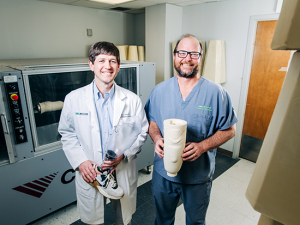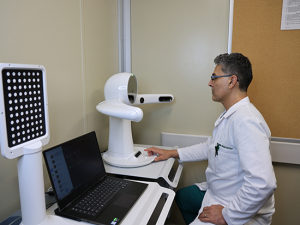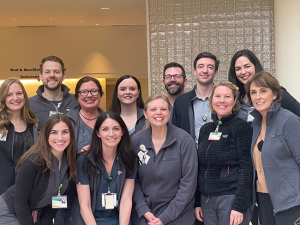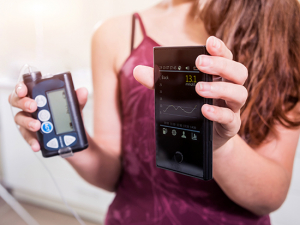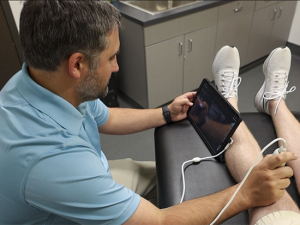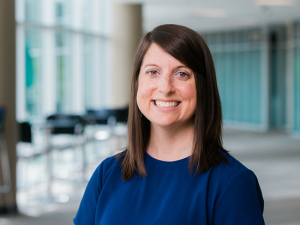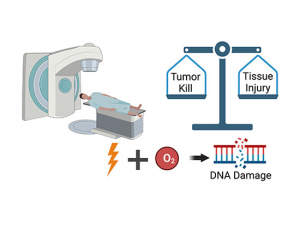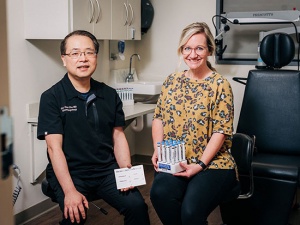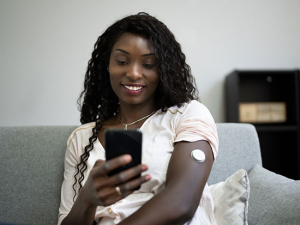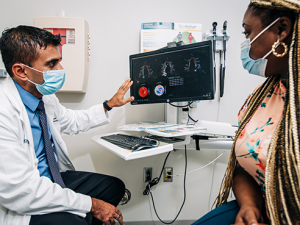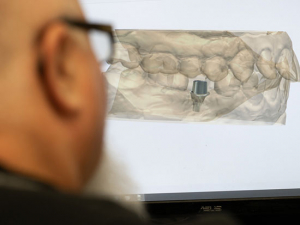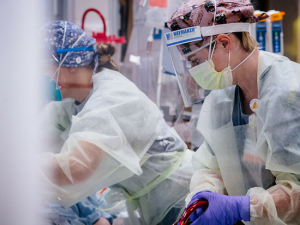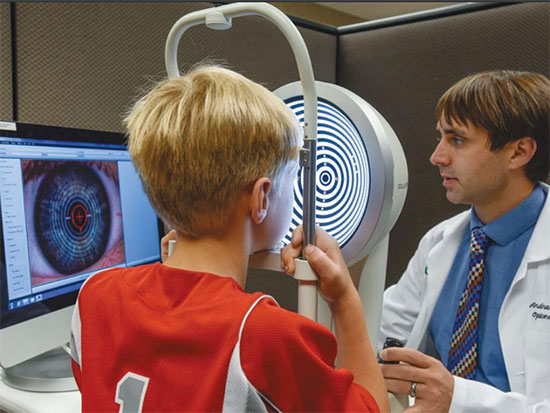 UAB's Myopia Control Clinic offers three treatments that on average reduce myopia progression about 50 percent, said Andrew Pucker, O.D., Ph.D. (above). “The ideal patient is someone who is 8-12 years old, who has a need for glasses and has shown progression — that is, needing stronger glasses over time. But we will treat people even in their 20s who are progressing.”Myopia, which means nearsightedness, comes from two Greek words meaning “close” and “eyes,” probably from the squinting that myopic patients do in order to see better.
UAB's Myopia Control Clinic offers three treatments that on average reduce myopia progression about 50 percent, said Andrew Pucker, O.D., Ph.D. (above). “The ideal patient is someone who is 8-12 years old, who has a need for glasses and has shown progression — that is, needing stronger glasses over time. But we will treat people even in their 20s who are progressing.”Myopia, which means nearsightedness, comes from two Greek words meaning “close” and “eyes,” probably from the squinting that myopic patients do in order to see better.
Whatever you call it, myopia is more common than ever. In the United States, more than 1 in 3 people are nearsighted, according to the National Eye Institute. That’s a 32 percent increase from the early 1970s, when it was 1 in 4. In some countries in East and Southeast Asia, 90 percent of high schoolers are nearsighted. The trend is accelerating: Half of the planet will be myopic by 2050, according to a 2016 study in the journal Ophthalmology.
What’s going on? Researchers at UAB, including Andrew Pucker, O.D., Ph.D., assistant professor in the School of Optometry, are working feverishly to find out. (Theories below.) But Pucker also is leading one of the only clinics in Alabama that give patients a good shot at slowing or even stopping the advance of nearsightedness.
Ideal patient: 8-12 years old
The UAB Myopia Control Clinic opened in May 2017. It offers three research-proven treatments, which on average reduce myopia progression about 50 percent, Pucker noted in a recent article in Optometry Times. “With some it’s 100 percent, with others it’s not as much, but 50 percent is typical,” he said. In other words, patients can end up with a final prescription that is about half as “bad” as it would be otherwise.
“The ideal patient is someone who is 8-12 years old, who has a need for glasses and has shown progression — that is, needing stronger glasses over time,” Pucker said. “But we will treat people even in their 20s who are progressing. We have a medical student from UAB, who is a patient and has found it helpful.”
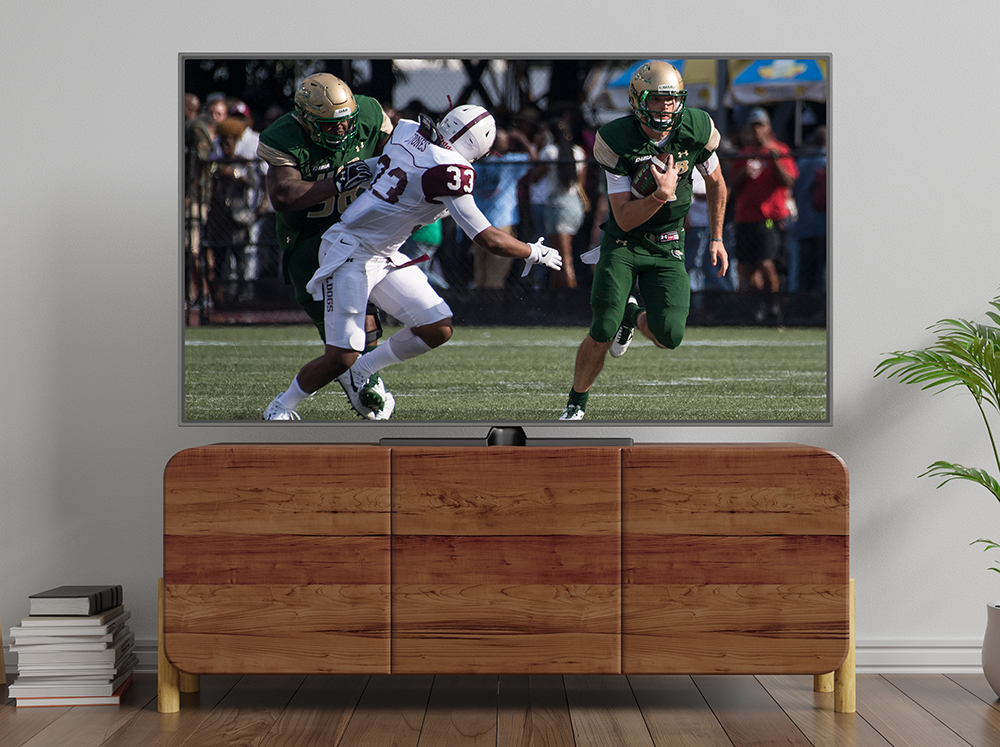
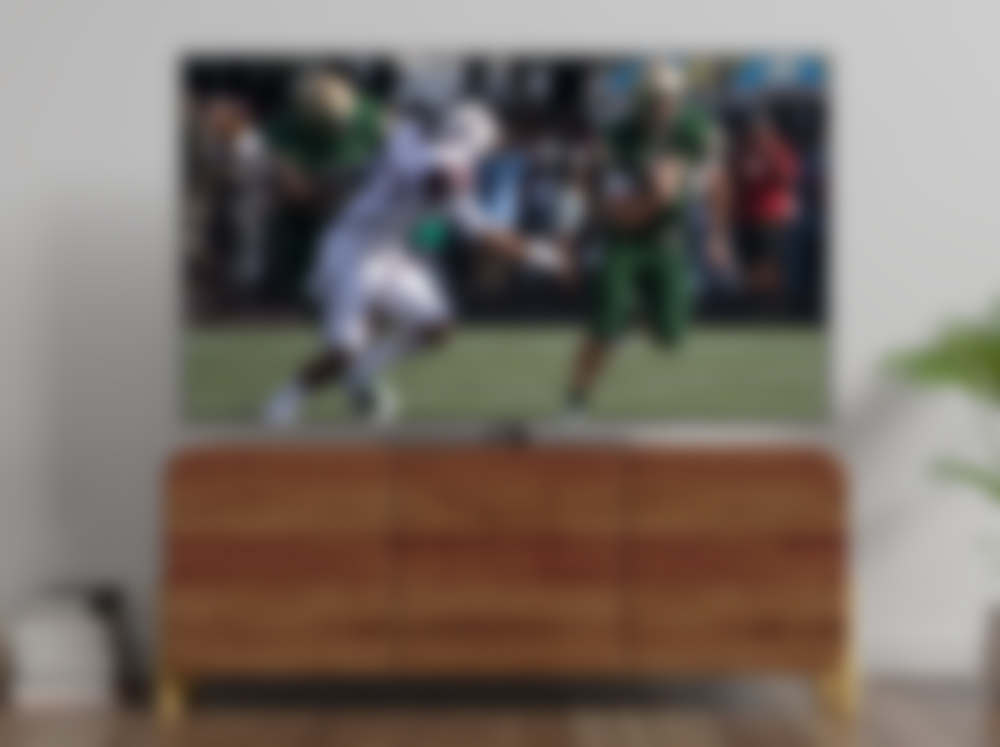
What's it like to see life in a blur? The images above approximate the same view at 20/20 (normal vision) and 20/100.
Drag the slider left and right to see the difference.
Three treatments, about 50 percent reduction
- Atropine eye drops — similar to the drops that the eye doctor uses to dilate your eyes during an annual exam, but at much lower concentration (0.01%). Studies have found that this low concentration can slow myopia progression by about 50 percent. (UAB’s Kathy Weise, O.D., is currently leading an NIH-funded clinical trial of the treatment in children ages 5-12. Learn more here.
- Corneal reshaping contact lenses — these hard contact lenses are worn at night. They physically alter the shape of the cornea so that the wearer can see clearly during the day without glasses or contacts. Research shows that they reduce myopia progression by about 50 percent on average.
- Soft bifocal contact lenses — these contacts, originally designed for helping with near reading, are worn throughout the day to reduce progression. Research shows that they reduce myopia progression on average by about 50 percent.
Long-term progress
The choice of treatment is based on a patient’s needs and preferences, Pucker noted. Younger children may be prescribed eye drops because some children have trouble maintaining their contact lenses. That said, many children can wear contact lenses successfully, and children ages 8-14 were less likely to develop problems with contact lens than older teens and college students ages 15-25 in a 2014 study. The corneal reshaping lenses are the most expensive option; however, the cost of the bifocal soft contacts isn’t much more than normal contact lenses, he added.
“For every new family or patient, we do a free, 45-minute introduction to myopia control,” Pucker said. “We talk about options and give information and then families can go home and talk it over. We want them to be fully informed. This is a long-term treatment; if they are going to start, they need to do it for years. We don’t have a specific age range, but we tend to say at least until age 16, which is when people’s prescription starts to stabilize.” About 75 percent of people will find that their prescription stops changing by age 18, Pucker said. “And by age 26, only 4 percent of people are still progressing.”
Why bother? Preventing blindness, for one.
One difference between the treatment options is that atropine drops do not appear to slow the length of eye growth as well as contact lenses do, Pucker said. Whereas the shape of an eye is generally a sphere, myopia results in an elongation and a more oval shape. “We can’t reverse what has already happened, unfortunately, and if you stop wearing them, the progression will begin again,” Pucker said.
So why bother? Myopia is a significant risk factor for more serious eye issues, including glaucoma, cataracts and retinal detachment, Pucker said. The risk increases exponentially based on the amount of nearsightedness. A person with a –1 or –2 diopter prescription has a 2.4 times greater chance of retinal detachment than a person with normal vision. A person with a –15 prescription, on the other hand, has a risk 126 times higher than normal. Retinal detachment, which occurs when the eye tissue thins and then tears, can result in permanent blindness if not corrected quickly. “If you catch it early, the retina can be tacked back up in various ways,” Pucker said. “But if you let it go for several hours, there’s nothing that can be done.
“The idea is if you can keep someone under 6 [diopters] you drastically decrease their chances of retinal detachment,” Pucker continued. “If we decrease progression by 50 percent and you were destined to be a –6, now you’re a –3. You’re in the safer range.”
What’s with all the myopia?
Why are there suddenly so many more myopics in the world? The change is too fast for genetic shifts to be responsible, Pucker said, although genetics clearly play a role in myopia risk. No single gene causes myopia, but several have been associated with higher risk. And it certainly runs in families. A person whose parents didn’t wear glasses has a 10 percent chance of being myopic. With a single glasses-wearing parent, the risk rises to 25 percent — and 50 percent if both parents wore glasses. “And twin data suggests that if one twin has myopia then there is a 90 percent chance the other will,” Pucker said.
Outside vs. inside
What’s going on, then? “There are all sorts of theories,” Pucker said. One is that people spend much more time inside today, and exposure to natural light has a definite protective effect on eyesight. Although it may not be obvious, “it is much, much brighter outside than inside,” Pucker said. “It is 1,000 times or more. A typical room with artificial light may be a few hundred lux [a standard measure of brightness]. Direct sunlight can be 100,000 lux.” One of sunlight’s effects is to increase the amount of dopamine in the eyes; retinal dopamine is thought to reduce myopia. Systemic vitamin D levels may also play a role.
Spectra and heritage
The spectra of light may be another factor. Natural light has a variety of wave lengths, while artificial light is less bright and of a more limited wavelength spectrum. The red wavelengths in sunlight may slow eye growth. Blue light may accelerate eye growth. Higher levels of education — which are likely correlate with more time inside — are also associated with higher levels of myopia. Patients of Asian descent also have higher risk as well.
Ongoing research
UAB research during the past several decades has helped to uncover clues to myopia prevention and progression. Basic research by vision scientists at UAB continues to explore the mechanics of myopia and other vision impairments. In his lab, for example, Pucker is studying the ciliary muscle, which controls eye focusing.
Research with patients, meanwhile, is answering crucial questions about how to treat the problem. The COMET trial, which enrolled 469 children at UAB and three other institutions from 1996 to 2015, proved that correcting the defocus on the peripheral retina could slow myopia development in children. Half of the children wore regular glasses during the trial, while the other half wore special glasses that improved peripheral focus. After five years, the children with those special glasses saw myopia development slow by 20 percent compared with the control group. This fall, Pucker will start a clinical trial of a new type of custom soft contact lens for myopia control.
“Myopia control is not as well known yet in Alabama, but in countries like Singapore they realize what a huge problem they have and in California myopia management has become really popular,” Pucker said.
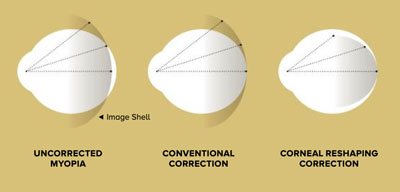 Traditional glasses and contact lenses correct focus on the fovea, the central pit in the retina responsible for our sharpest vision. But they fail to correct blur on other parts of the retina. Hard contact lenses reshape the cornea, allowing a person to see clearly without glasses or contacts during the day.
Traditional glasses and contact lenses correct focus on the fovea, the central pit in the retina responsible for our sharpest vision. But they fail to correct blur on other parts of the retina. Hard contact lenses reshape the cornea, allowing a person to see clearly without glasses or contacts during the day.